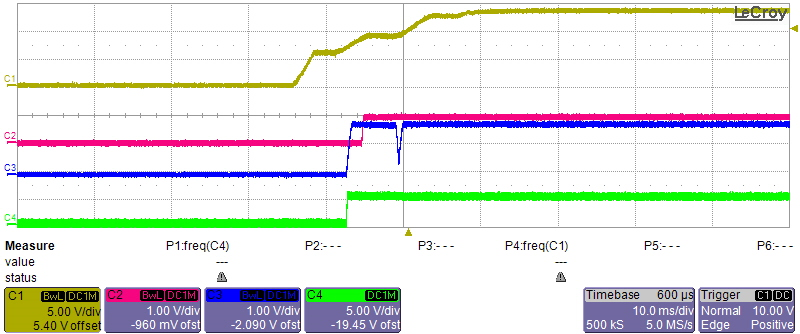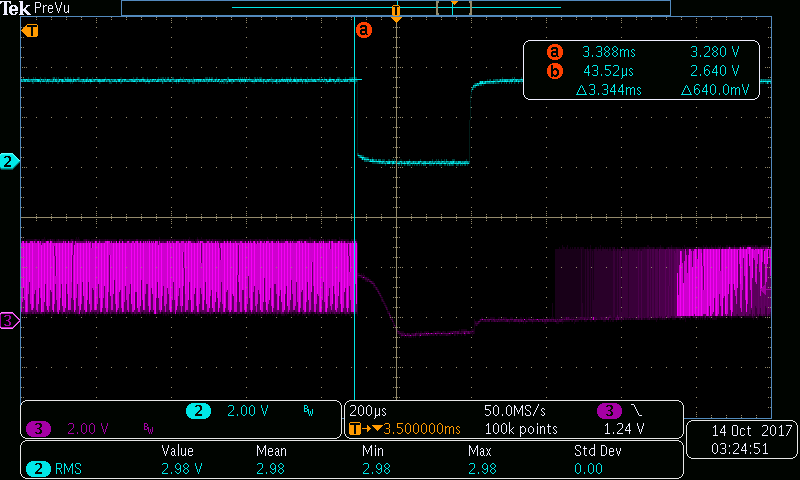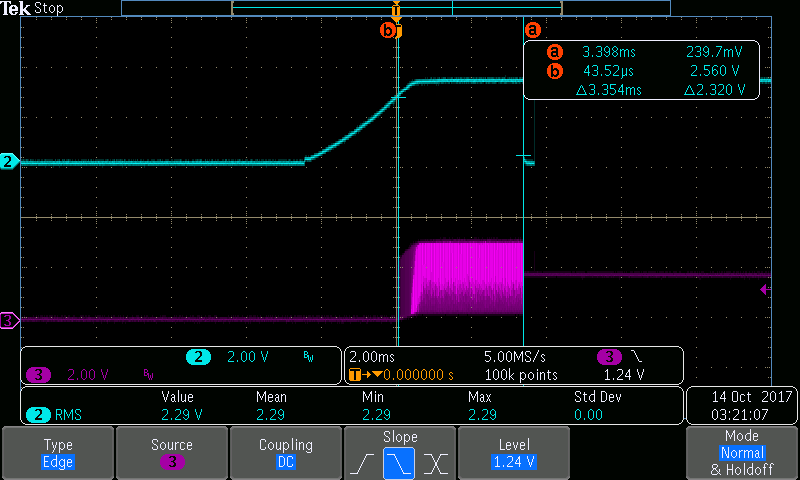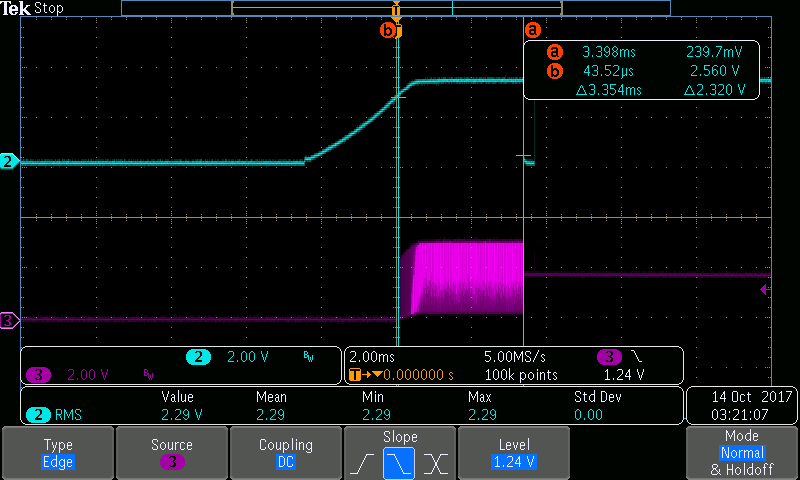Other Parts Discussed in Thread: LM26420
Hello,
I was curious as to why VOUT1 would fall then rise roughly 5ms after VOUT2 is ramped during a full-load startup.
Enables for both bucks are tied to the same power good signal.
Here is the scopeshot showing the startup behavior. The blue trace is VOUT1 (1.8V) and pink is VOUT2 (1.2V). Green trace is output of supply whose PG signal enables the LM26420-Q1 bucks. Yellow trace is the input voltage.
I have also attached the schematic for your reference.
I look forward to hearing your feedback.





